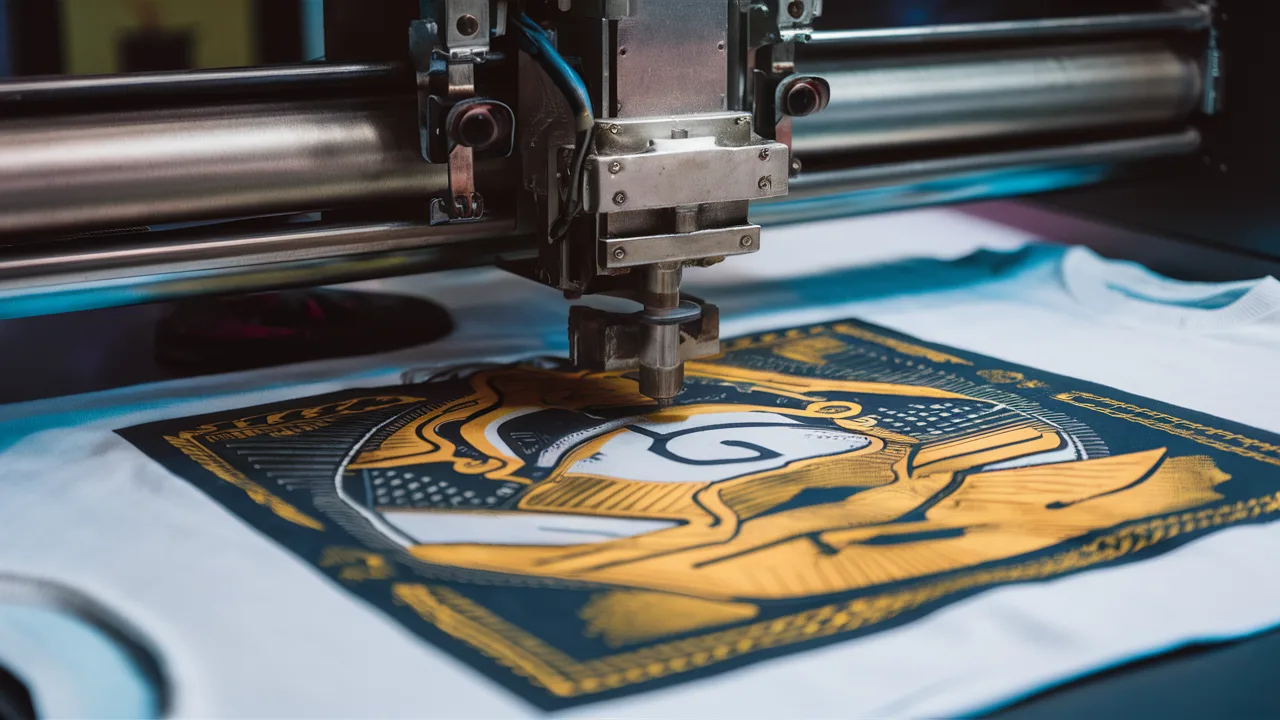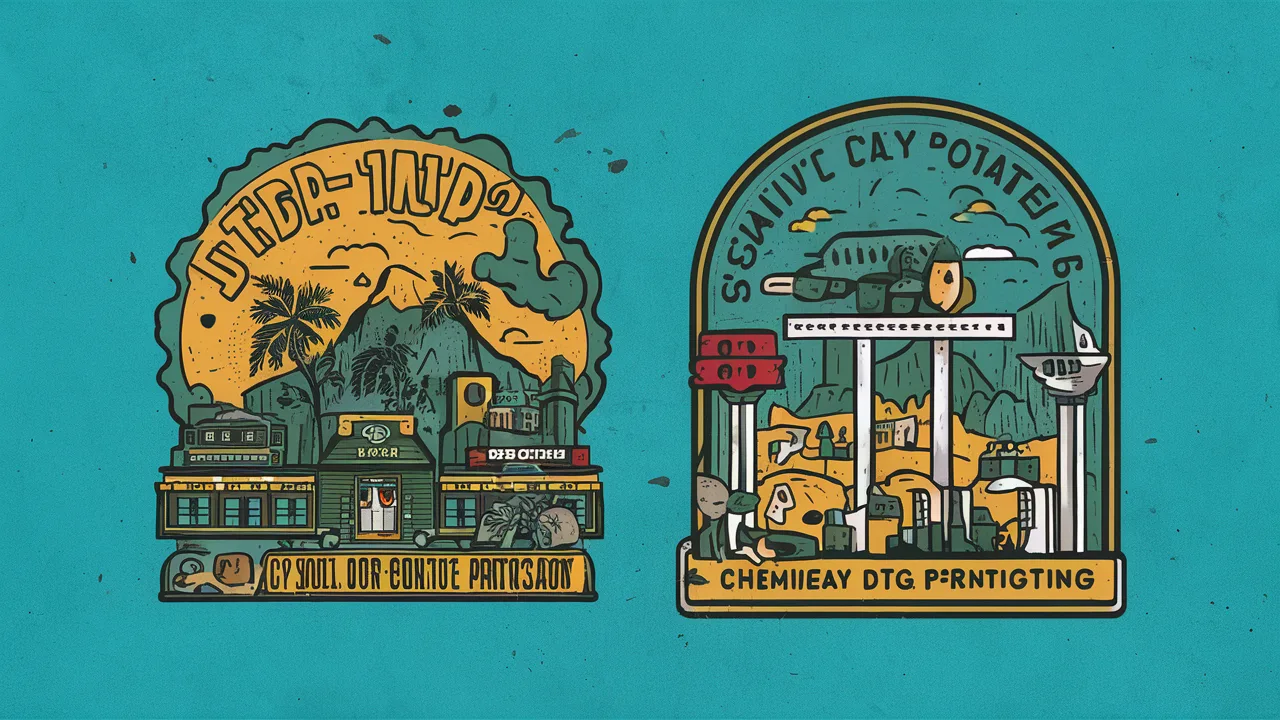DTG vs Screen Printing: Which Method Should You Choose?
The answer depends entirely on your business goals and order requirements. DTG vs screen printing each excel in different scenarios—DTG printing dominates small batch production with complex, full-color designs, while screen printing delivers unmatched cost efficiency and durability for large quantity orders. Your decision should factor in order volume, budget constraints, design complexity, and long-term business strategy.
Quick Comparison: DTG vs Screen Printing Essentials
- DTG printing excels with detailed artwork, unlimited colors, and small quantity orders starting from single pieces.
- Screen printing dominates large volume production with simple designs, offering superior durability and cost savings at scale.
- Cost considerations: DTG provides budget-friendly entry with no minimums; screen printing becomes economical as quantities increase beyond 50-100 pieces.
- Design flexibility: DTG handles photographic prints and gradients effortlessly; screen printing works best with bold, solid color designs.
- Production speed: DTG processes individual pieces quickly; screen printing speeds up dramatically with larger batches.
Understanding DTG Printing Technology
DTG printing works like a sophisticated inkjet printer designed specifically for fabric. Water-based inks are sprayed directly into garment fibers using precision print heads, creating vibrant, detailed prints without screens or setup requirements. This digital printing method excels at reproducing photographs, gradients, and complex artwork that would be impossible or cost-prohibitive with traditional screen printing.

DTG Printing Advantages and Drawbacks
- Advantages:
- Perfect for small quantities and test runs without minimum orders
- Handles unlimited colors and complex designs including photographs
- No setup costs or screen fees—immediate production ready
- Environmentally conscious with water-based inks and minimal waste
- Drawbacks:
- Higher per-unit costs for large quantity orders
- Limited effectiveness on dark garments without pretreatment
- Fabric compatibility varies with synthetic blends
When DTG Printing Delivers Best Results
DTG printing shines for businesses requiring design flexibility and small batch production. Independent artists, startup clothing brands, and print-on-demand businesses leverage DTG for personalized products, limited edition releases, and market testing. If you’re offering custom designs with intricate details or launching with minimal upfront investment, DTG provides the perfect solution.
Screen Printing: The Traditional Powerhouse
Screen printing remains the gold standard for high-volume apparel production. This time-tested method pushes ink through mesh screens using squeegees, building up thick, durable layers of color. While setup requires more preparation—creating screens, mixing inks, and registration—screen printing delivers exceptional consistency and vibrant colors across hundreds or thousands of garments.
Screen Printing Strengths and Limitations
- Strengths:
- Exceptional durability and wash resistance
- Dramatically lower costs for large quantity production
- Superior color vibrancy, especially on dark fabrics
- Limitations:
- High setup costs make small quantities uneconomical
- Design changes require new screens and additional setup
- Color limitations—each color requires separate screen
Screen Printing’s Sweet Spot
Screen printing excels when producing large quantities with consistent designs. Corporate merchandise, event apparel, and established clothing brands rely on screen printing for its cost efficiency and professional finish. If you’re planning orders of 100+ pieces with simple, bold designs, screen printing delivers unmatched value and quality.
DTG vs Screen Printing: Detailed Cost Analysis
Understanding the true cost difference between DTG and screen printing requires looking beyond per-piece pricing. Setup fees, minimum orders, and volume discounts significantly impact your total investment:
| Printing Method | Low-End | Mid-Range | High-End |
|---|---|---|---|
| DTG (per shirt) | S$12 | S$18 | S$25+ |
| Screen Printing (per shirt, 500 pcs) | S$6 | S$10 | S$15 |
DTG offers immediate accessibility with no minimum orders or setup investments, making it ideal for testing markets and managing cash flow. However, screen printing becomes significantly more economical as quantities increase, especially for designs with fewer colors. The break-even point typically occurs around 50-100 pieces, depending on design complexity.
Environmental Impact: Comparing Sustainability
Environmental responsibility increasingly influences business decisions, and both DTG and screen printing offer different sustainability profiles worth considering for your brand’s values.

DTG: Cleaner Production Process
DTG printing uses water-based, eco-friendly inks with minimal chemical additives and produces virtually no setup waste. The digital process eliminates screen washing, chemical disposal, and excess ink mixing. However, pretreatment solutions for dark garments may contain mild chemicals, though significantly less than traditional screen printing processes.
Screen Printing: Traditional Challenges
Conventional screen printing involves plastisol inks, screen cleaning chemicals, and emulsion disposal, creating substantial wastewater and chemical waste. Setup processes generate more material waste, especially problematic for small batch production. Progressive screen printers now offer eco-friendly alternatives, but these require careful vendor selection and often premium pricing.
Real Business Applications: DTG vs Screen Printing
Understanding how successful businesses apply these printing methods helps clarify which approach suits your specific situation:
- Independent Artist Case Study: Creates unique, artistic t-shirt designs using DTG printing for 10-50 piece collections, allowing creative freedom without inventory risk.
- Corporate Event Company: Produces 1,000+ branded shirts quarterly using screen printing, achieving consistent branding and substantial cost savings.
- E-commerce Startup: Launches with DTG for market testing, then transitions high-selling designs to screen printing as order volumes justify the switch.
Making Your Decision: DTG vs Screen Printing Strategy
Your printing method choice shouldn’t be permanent—successful apparel businesses often use both DTG and screen printing strategically. Start with DTG printing for market validation and design testing, then graduate successful products to screen printing as demand grows. This hybrid approach maximizes flexibility while optimizing costs.
Consider your business stage, target market, and growth plans when choosing between DTG vs screen printing. Small quantities, complex designs, and rapid iteration favor DTG, while established products with consistent demand benefit from screen printing’s economies of scale.
FAQ
- Is DTG or screen printing more durable?
Screen printing generally offers longer-lasting colors, especially for frequent washes, due to its thick ink layers. - Which method is better for black shirts?
Screen printing typically delivers more vivid colors on dark fabric, although pretreatment in DTG can improve results. - Can I combine DTG and screen printing?
Yes! Many brands test-run via DTG first and switch to screen printing for bulk production. - What’s best for budget short runs?
DTG is ideal for small, cost-effective batch runs due to the lack of setup fees. - Which printer is more eco-friendly?
DTG is generally more eco-conscious, using water-based ink and generating less waste than screen printing.
